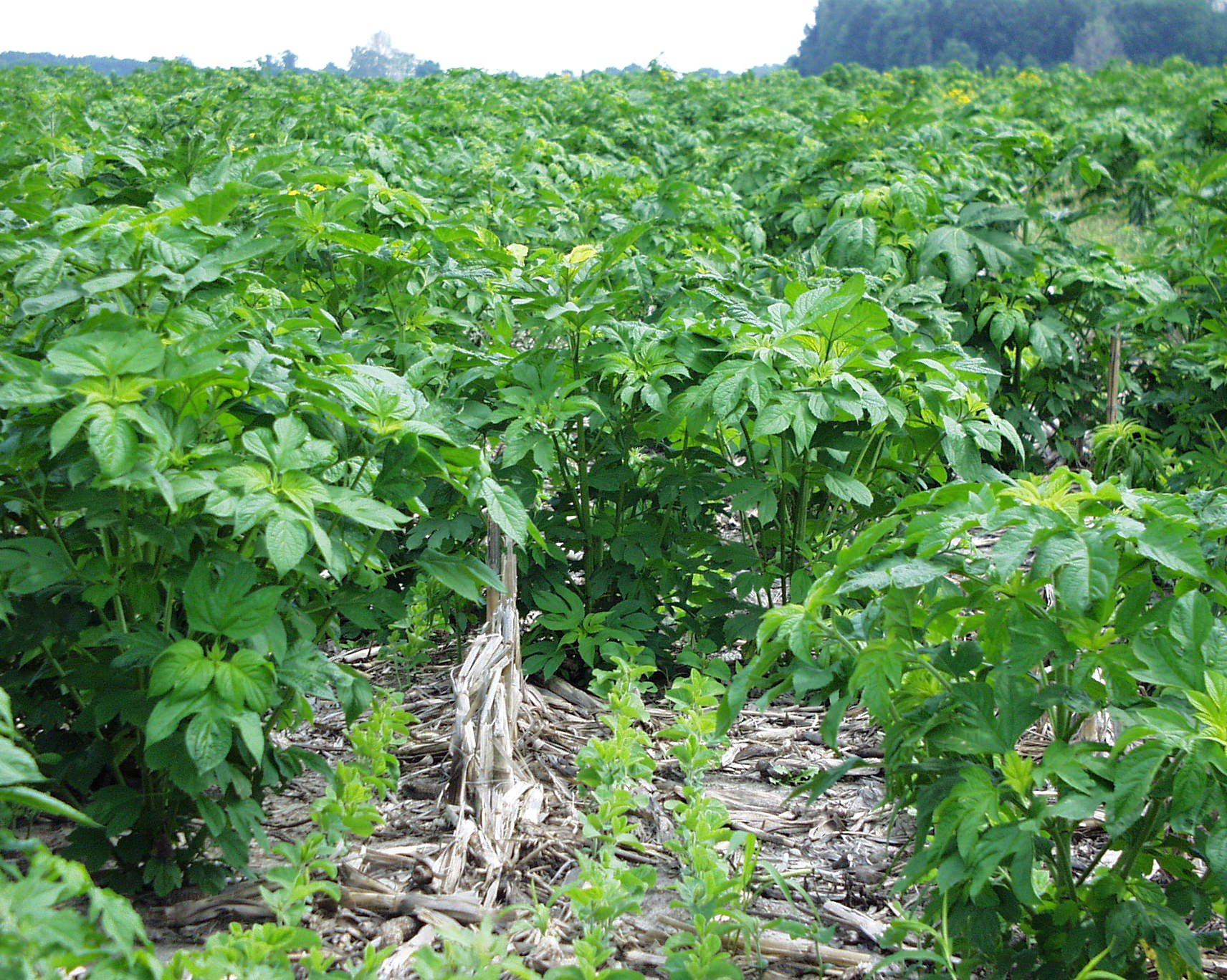West Lafayette, Indiana, USA
July 7, 2014

Giant ragweed grows around no-till soybeans that are emerging in a field covered with corn stover. (Purdue Department of Botany and Plant Pathology photo/Bill Johnson)
Purdue University weed scientists are asking Indiana farmers to report glyphosate-resistant giant ragweed in their crops to assist in determining how widespread the weed is in the state.
It is the time of year for postemergent herbicide applications, which means giant ragweed herbicide survivors can now be spotted. Purdue weed scientists are looking for live, whole-plant samples of giant ragweed that have survived an application of herbicide to confirm resistance. The information will enable them to assess and share the prevalence of glyphosate-resistant giant ragweed in the state.
“Giant ragweed is the worst broadleaf weed problem in all of our corn/soybean cropping systems in Indiana,” said Bill Johnson, professor of weed science. “The fact that it can emerge from soil depths up to 5 inches, and the fact that glyphosate (group 9) and ALS (group 2) resistance in this weed is common, makes control very challenging with our current herbicide arsenal.”
Giant ragweed has two resistant forms, unlike most glyphosate-resistant weeds in Indiana, which have one. One form is similar to other glyphosate-resistant weeds in that the leaves turn light green or yellow in three to seven days after application, followed by normal green leaf growth. In the second form, leaves turn brown and die (necrosis) within six hours to a couple of days, and new leaves grow with a light green or yellow tint, followed by normal coloring. A time-lapse video of the necrotic resistant form can be viewed at https://www.youtube.com/watch?v=eXTxEX5WpPw.
Purdue weed scientists are asking farmers with a glyphosate-resistant giant ragweed population in their crop to contact Nick Harre at nharre@purdue.edu or 618-314-0581 with location information. If resistance is confirmed, the form will be determined and documented.